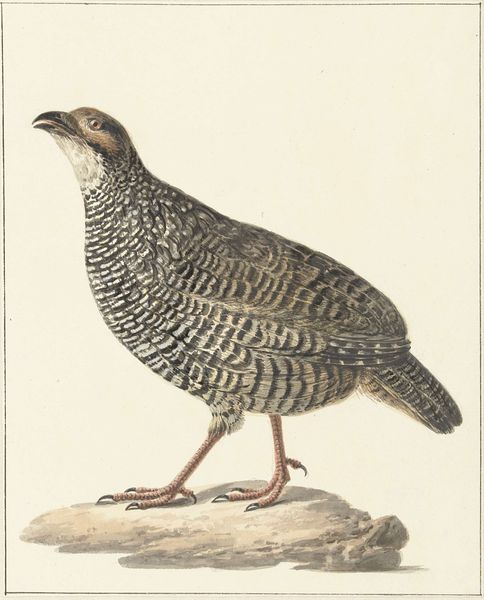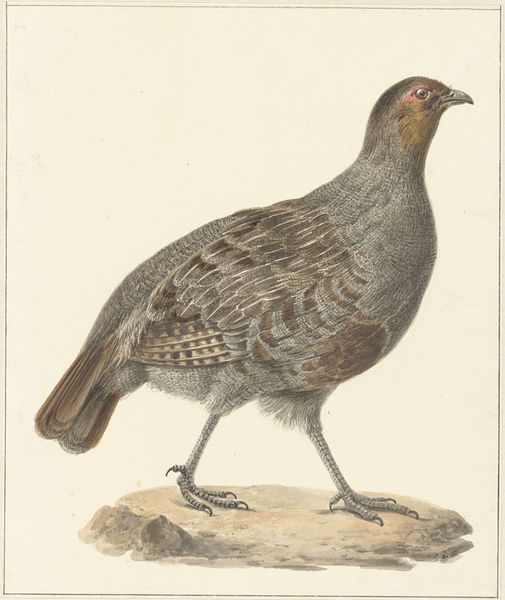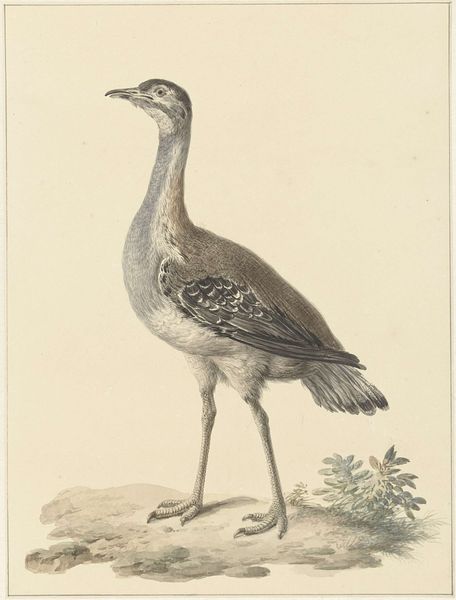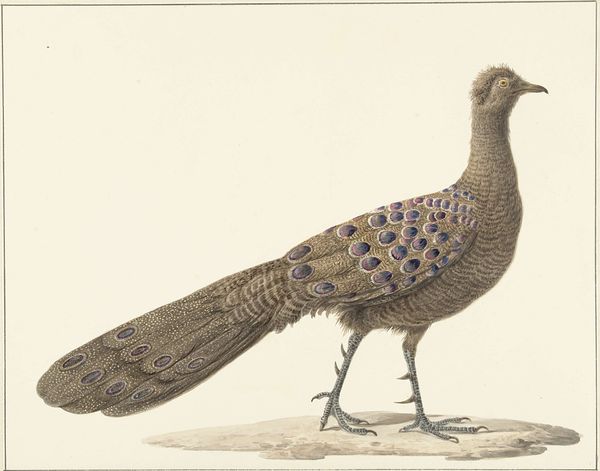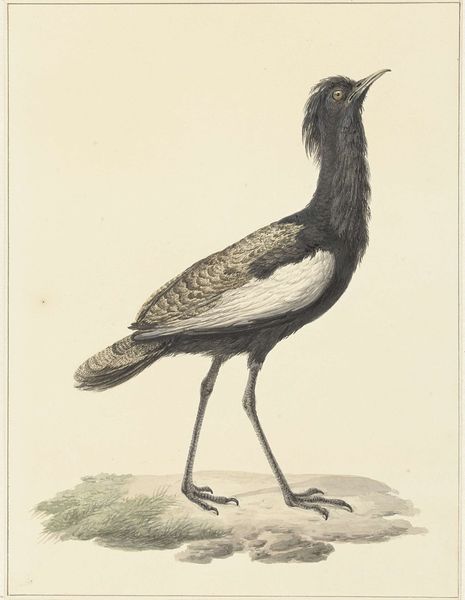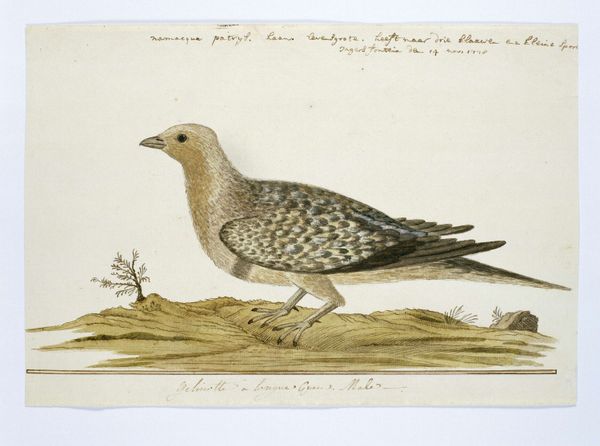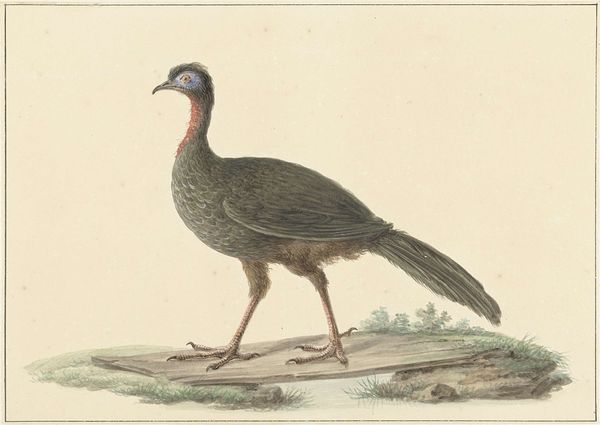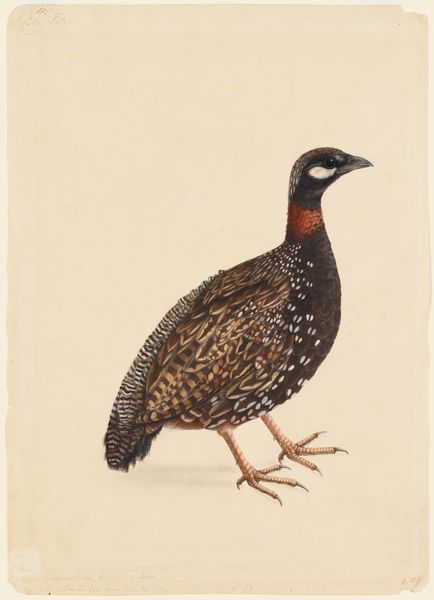
drawing, watercolor, pencil
#
pencil drawn
#
drawing
#
light pencil work
#
shading to add clarity
#
pencil sketch
#
landscape
#
botanical illustration
#
watercolor
#
pencil drawing
#
pencil
#
botanical drawing
#
pencil work
#
watercolour illustration
#
botanical art
Dimensions: height 280 mm, width 242 mm
Copyright: Rijks Museum: Open Domain
Editor: This is "Patrijs (?), " made sometime between 1759 and 1842, by Pieter Pietersz. Barbiers. It's a watercolor and pencil drawing of a partridge standing on a small patch of ground. What really strikes me is the detail – you can almost feel the texture of the feathers. What’s your take on it? Curator: The beauty of this piece, for me, lies in understanding the process. Think about Barbiers himself – where did he source his pigments? How did the socio-economic realities of his time affect the availability and cost of these materials? Was the paper itself a mass produced item or something carefully handcrafted? Editor: That’s a perspective I hadn't considered! I was focused on the final image, the aesthetic of it all. Curator: But the 'aesthetic' doesn't exist in a vacuum. The very act of depiction – choosing this specific bird, rendered with such painstaking detail – speaks volumes about the artist's labor and relationship with the natural world. It might even say something about the commodification of nature itself, don't you think? Was it commissioned by someone? To showcase ownership over the land and nature in it? Editor: Possibly, especially given the detail used to capture each individual feather. I suppose knowing where he got his supplies from does reveal a bit about what materials were considered valuable or worth using in art. Curator: Precisely! And that valuation reflects broader societal values and hierarchies. This innocent-seeming drawing then becomes a site where we can examine the complex interplay between art, labor, and consumption in 18th and 19th century Netherlands. What do you take away from this experience now? Editor: It definitely highlights how crucial it is to think beyond the surface when appreciating art. Thanks for illuminating the importance of materials in interpreting meaning!
Comments
No comments
Be the first to comment and join the conversation on the ultimate creative platform.
